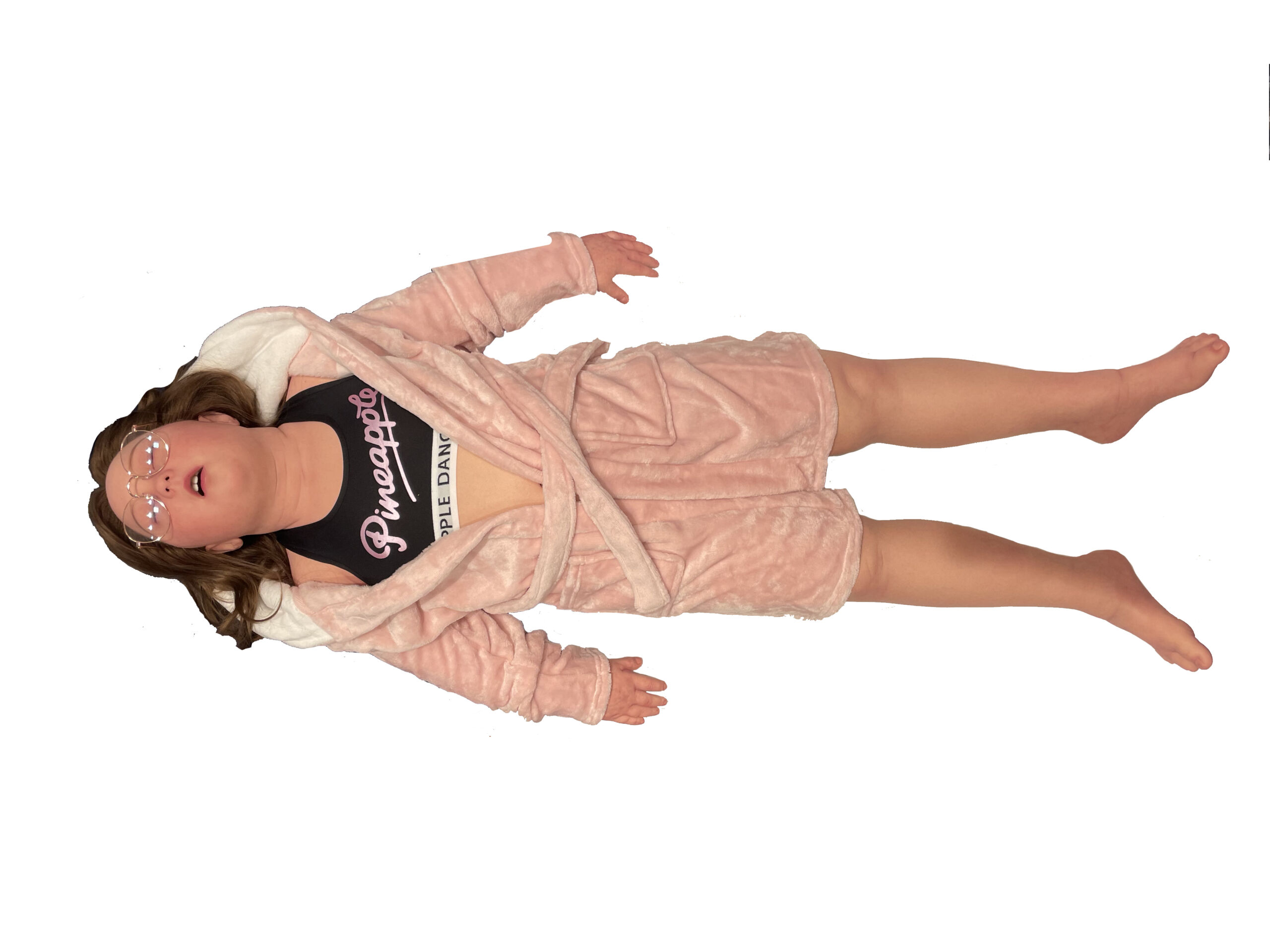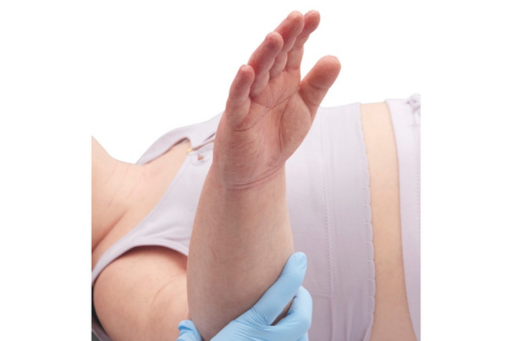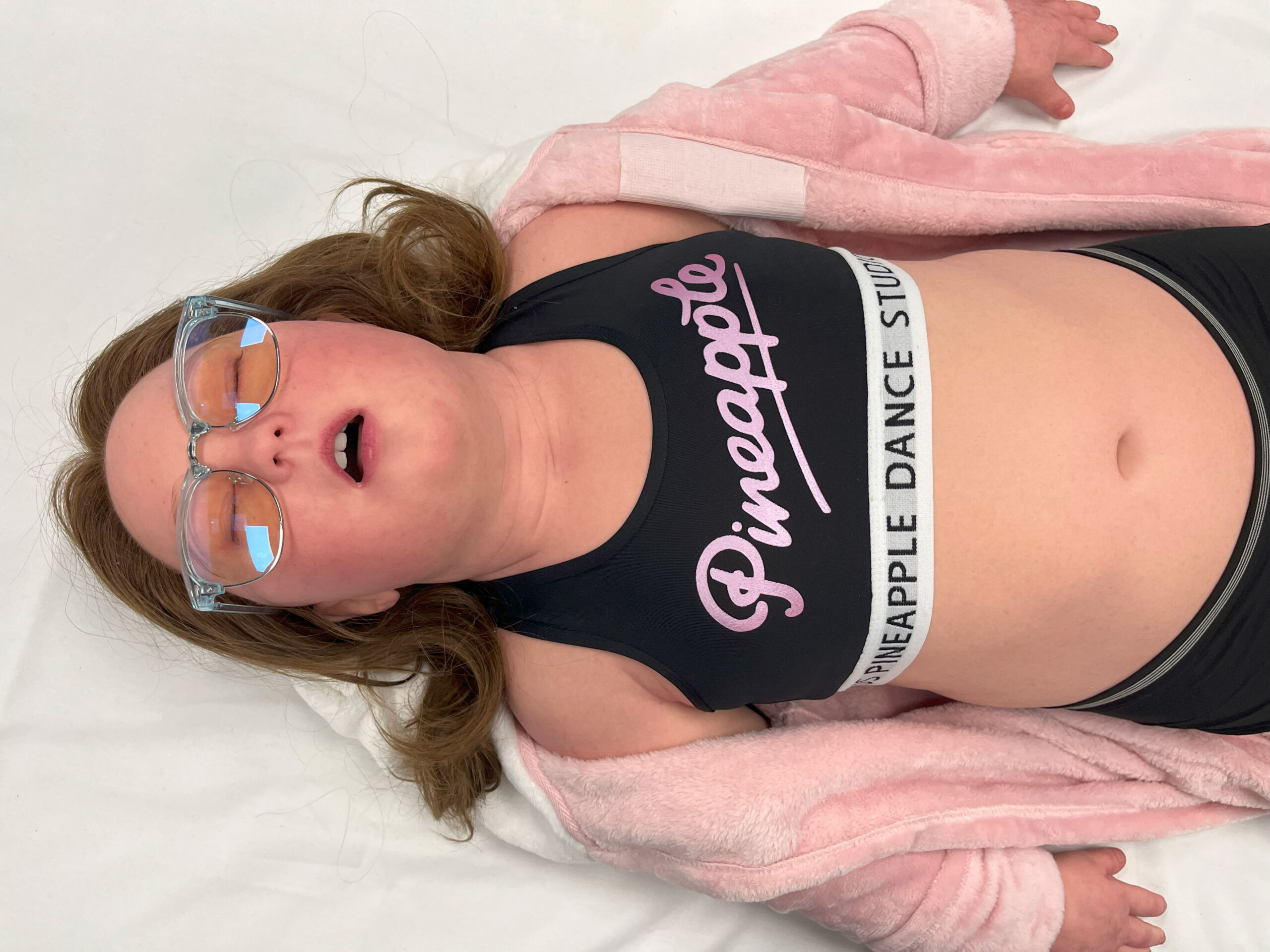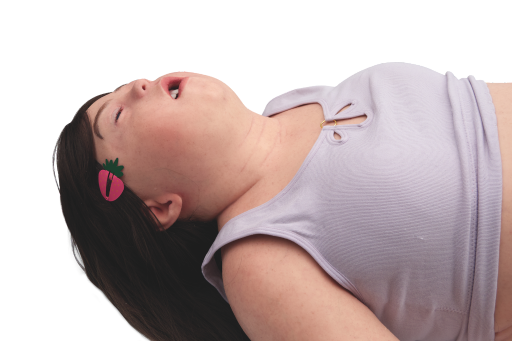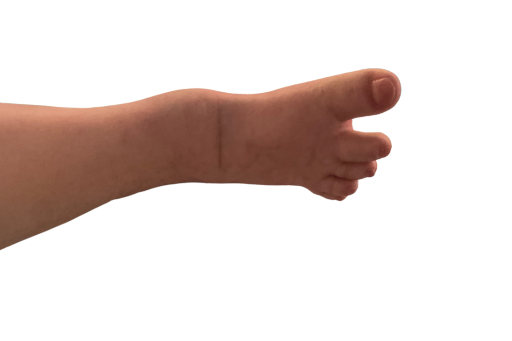
The world’s first truly inclusive Child with Down Syndrome Training Manikin
Lifecast Body Simulation, a leader in highly realistic training manikins, announces the release of the world’s first Child with Down Syndrome training manikin. This realistic manikin was formed from a real-life 3D body scan of a seven (7) year old girl with Down syndrome named Gwen and will be available to healthcare education facilities around the world to facilitate specialty and inclusive training in managing Down syndrome.
Down syndrome (also called Trisomy 21) is a genetic disorder caused when abnormal cell division results in extra genetic material from chromosome 21. While varied amongst patients, a few common physical traits of Down syndrome are low muscle tone, a difficult airway for intubation, smaller stature, gapping in the toes, almond-shaped eyes, a single deep crease across the center of the palm, smaller hands and feet – all of which are accurately represented in the child with Down syndrome training manikin.
Gwen was created by Lifecast Body Simulation and the University of Greenwich in London who also received support from the Down Syndrome Association. Gwen and her family are truly supporting such a worthy cause in creating awareness of Down syndrome and giving healthcare providers an accurate means of training while continuing to support diversity and inclusion in simulation-based education and training.
“Gwen is the world’s first truly inclusive manikin. Our goal is to make manikins that look like real people. We worked with the University of Greenwich in the UK to create this manikin lifecast and 3D scan of Gwen, a 7 year-old girl with Down Syndrome who lives in the UK with her dad, mum and brother.” says David Halliwell, Founding Director of Lifecast Body Simulation Ltd.
CHILD WITH DOWN SYNDROME – KEY FEATURES
- Difficult airway and smaller mouth for intubation
- CPR compliant
- Enlarged tongue
- Simian Crease – single transverse crease in hand
- Gapping in toes
- Smaller stature
- Almond-shaped eyes
- Smaller hands and feet
- IO access
- Ability to train on C1 and C2 Vertebrae Compliance – no head tilt or chin lift
Options:
- Intraosseous access
- Premium padded carry bag with wheels
Every effort is made to replicate the manikins. However, each manikin is handmade, meaning each one may differ from those shown here.
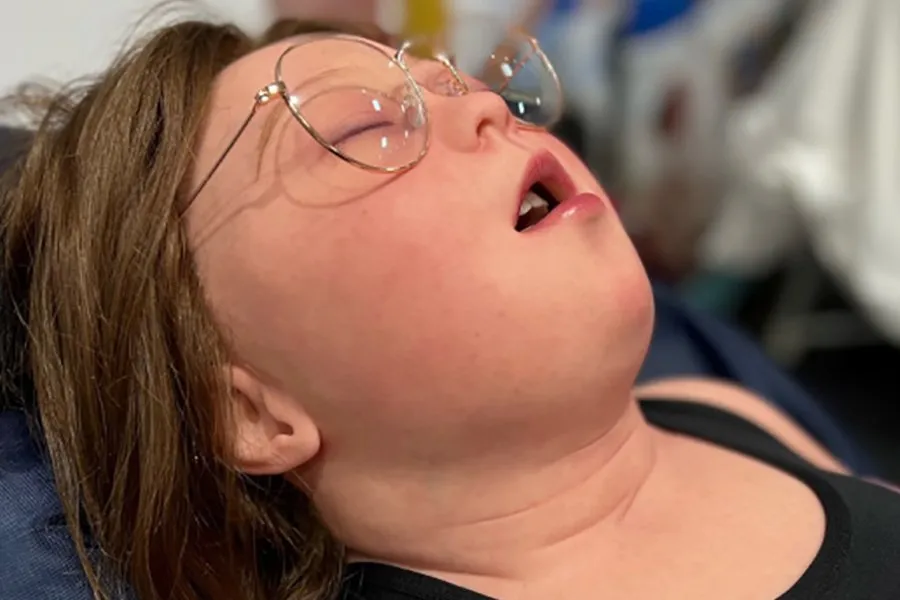
Lifecast Gwen Gallery
How Our Customers Feel
“Our students can’t talk enough about how realistic the 7 Lifecast manikins are and how much they learn with doing hands-on simulations!”
“We have a large family of Lifecast manikins that are a key element in the education we provide our critical care paramedics to enable them to be able to provide the highest level of care to the patients of Ontario. We are huge proponents of these manikins!”
“We have many Lifecast manikins and an Immersive Interactive room. The feedback we receive from those who have used them, say the realism is like none other and our learners assessments using the Lifecast the manikins have been more detailed then ever before!”
“Our 9 Lifecast manikins all represent specific patients to match scenarios in our curriculum – from a 16-year-old with Cystic Fibrosis to a hospice patient with cervical cancer. The Lifecast manikins are so realistic that our learners experience an exceptional level of engagement in the scenarios.”
“We have an entire family of Lifecast manikins and it has made a massive difference in the quality and realism that our paramedics get to experience in sims. Thank you for making such great products and providing even better customer service!”
“Our Practical Nursing students are amazed by our new Lifecast manikins!”
“The level of realism the Lifecast manikins provide, naturally lead to students instinctually providing a higher sense of patient respect and sensitivity compared to all other task trainers and patient simulators on the market.”



